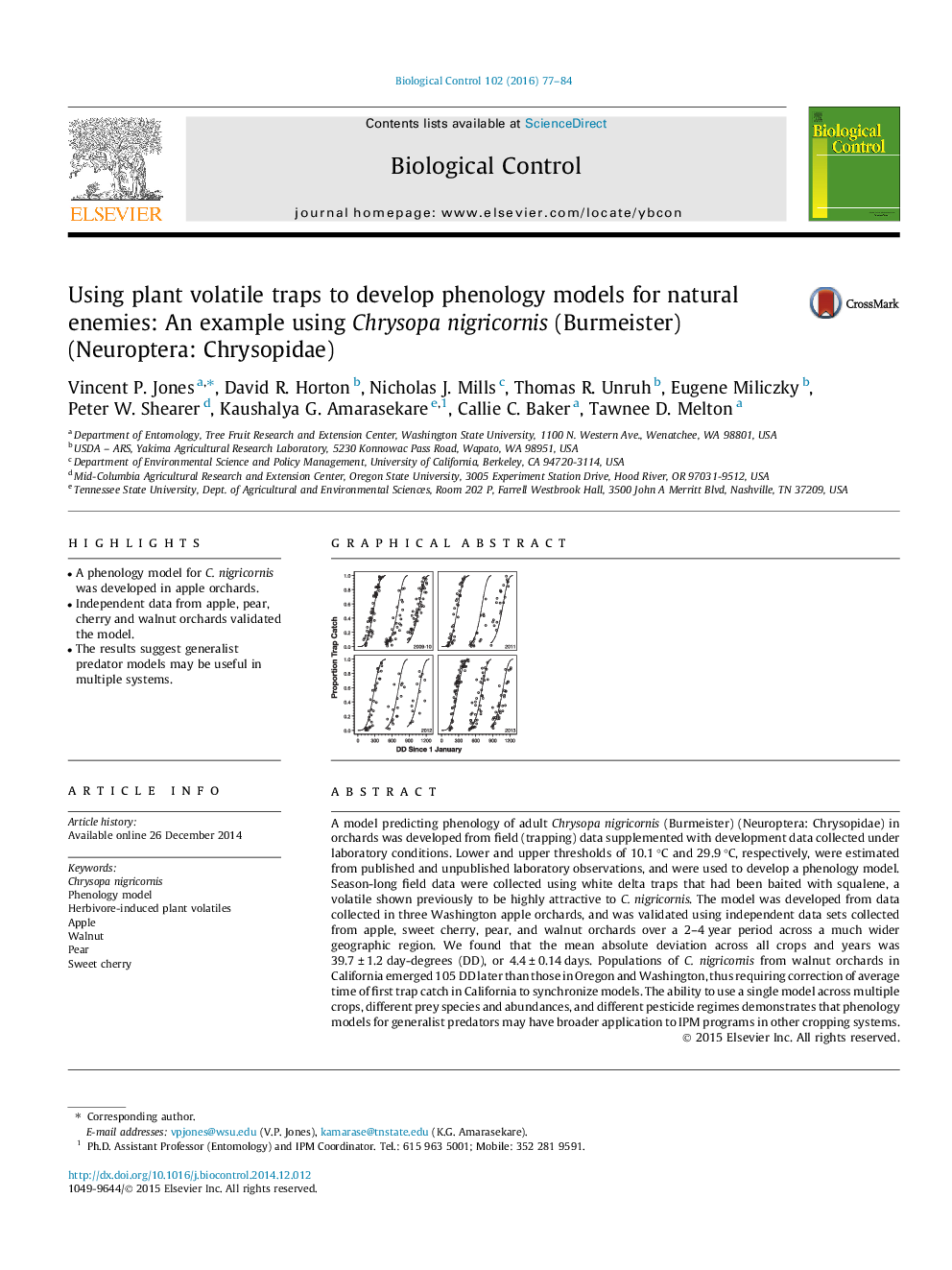| کد مقاله | کد نشریه | سال انتشار | مقاله انگلیسی | نسخه تمام متن |
|---|---|---|---|---|
| 4503569 | 1624232 | 2016 | 8 صفحه PDF | دانلود رایگان |

• A phenology model for C. nigricornis was developed in apple orchards.
• Independent data from apple, pear, cherry and walnut orchards validated the model.
• The results suggest generalist predator models may be useful in multiple systems.
A model predicting phenology of adult Chrysopa nigricornis (Burmeister) (Neuroptera: Chrysopidae) in orchards was developed from field (trapping) data supplemented with development data collected under laboratory conditions. Lower and upper thresholds of 10.1 °C and 29.9 °C, respectively, were estimated from published and unpublished laboratory observations, and were used to develop a phenology model. Season-long field data were collected using white delta traps that had been baited with squalene, a volatile shown previously to be highly attractive to C. nigricornis. The model was developed from data collected in three Washington apple orchards, and was validated using independent data sets collected from apple, sweet cherry, pear, and walnut orchards over a 2–4 year period across a much wider geographic region. We found that the mean absolute deviation across all crops and years was 39.7 ± 1.2 day-degrees (DD), or 4.4 ± 0.14 days. Populations of C. nigricornis from walnut orchards in California emerged 105 DD later than those in Oregon and Washington, thus requiring correction of average time of first trap catch in California to synchronize models. The ability to use a single model across multiple crops, different prey species and abundances, and different pesticide regimes demonstrates that phenology models for generalist predators may have broader application to IPM programs in other cropping systems.
Figure optionsDownload as PowerPoint slide
Journal: Biological Control - Volume 102, November 2016, Pages 77–84